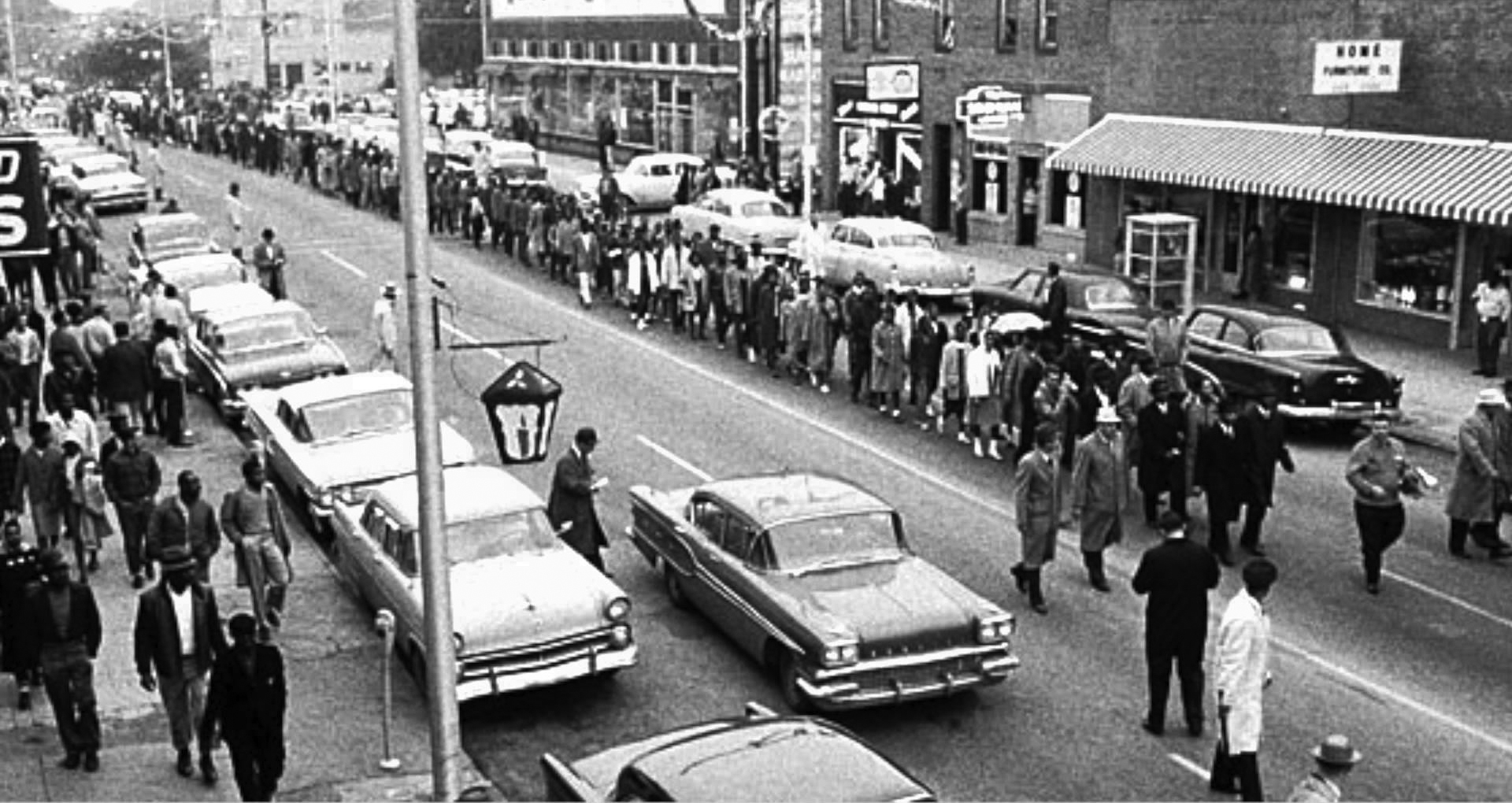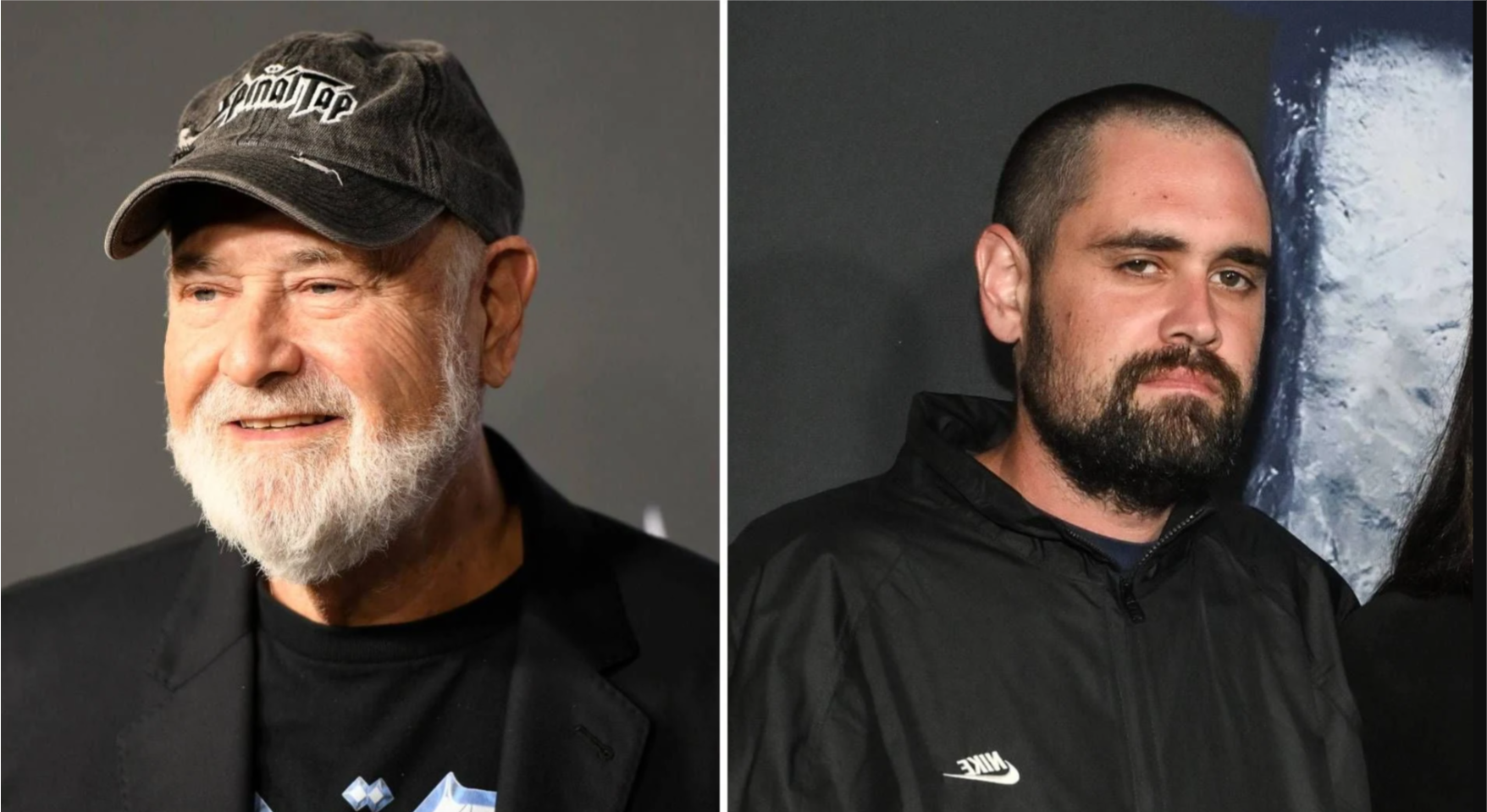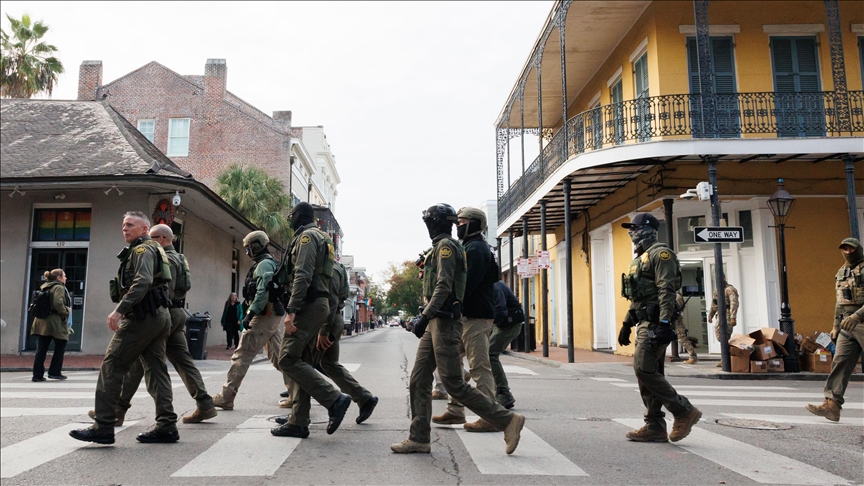(ThyBlackMan.com) “There comes a time when people get tired of being trampled over by the iron feet of oppression. There comes a time, my friends, when people get tired of being plunged across the abyss of humiliation, where they experience the bleakness of nagging despair. There comes a time when people get tired of being pushed out of the glittering sunlight of life’s July and left standing amid the piercing chill of an alpine November. There comes a time.” – Martin Luther King, Jr., December 5 1955, Address to the first Montgomery Improvement Association Mass Meeting
This week marks the anniversary of the first of the Mass Meetings that drove the strategy and spirit of the Montgomery Bus Boycott, a foundational event in the Civil Rights Movement.
My parents were active in the Civil Rights Movement in Louisiana at the time, and their experiences illustrate how the Montgomery protests reverberated throughout the South, and also how New Orleans’ distinctive history shaped racial issues there.
Even during slavery, New Orleans was home to a large community of free people of color, the gens de colour libre – many of whom had never been enslaved. Many were refugees from Saint-Domingue — now Haiti — who fled the revolution.
As Jim Crow took over the south, many formerly enslaved people also flocked to Louisiana.
It was this class of free people of color who became the early civil rights activists, including Homer Plessy, whose parents were among those refugees from Haiti.

To quote my mother, Sybil Haydel Morial, in her memoir, Witness to Change: “In many instances, including the landmark Plessy v. Ferguson case, Louisiana initiated important changes in civil rights thinking and activism. The significance of these events was often obscured because of the unusual, often subtle, way in which they developed.”
Many Louisianans, both white and Black, were accustomed to accommodation in a way that was not yet acceptable in other parts of the South.
This is not to say Louisiana did not have its share of racial violence. In the 1960s, Bogalusa, Louisiana, was thought to have the highest per-capita Ku Klux Klan membership in America. But in certain parts of the state, overt violence was tempered because of the tradition of compromise that had developed between the races over the centuries.
Which may be why few people may aware that two years before the Montgomery Bus Boycott, a Baptist minister by the name of T.J. Jemison led a bus boycott in Baton Rouge.
In those days, the screens on buses proclaiming “For Colored Patrons Only” were placed in holes on the backs of seats and could be moved forward and back. Black riders had to sit behind the screens. Sometimes, “just for devilment,” as my mother would say, a Black student would sit in front of the screen, prompting the driver to stop the bus and demand that the student move behind the screen. Often, the offending student would fling the sign out the window and be put off the bus.
Once, when he was a teenager, my father, Dutch, who was very light skinned, boarded the bus and sat directly behind the screen. A white passenger who assumed my father also was white, picked up the sign and moved it behind him so he was in the white section. Without saying a word, my father moved the screen back in front of him. Again, the white passenger moved the screen behind him, saying, “You belong in front of the screen.”
Again, my father placed the screen in front of him and said, “I know where I belong.”
My father began his career as a civil rights attorney in 1954, the year of the Brown v. Board of Education decision, but it took a detour when he was drafted into the Army. My parents spent the first year of their marriage in Maryland and returned to Louisiana in September of 1956. The Montgomery Bus Boycott had been underway for nine months by then.
Although Brown v. Board of Education had been decided two years earlier, the laws of “Separate But Equal” had to be individually challenged in each Southern state. The layers of the NAACP Legal Defense and Education Fund – including future Supreme Court Justice Thurgood Marshall – were traveling the country to assist local attorneys in arguing cases in each state.
My father, who was just 26 years old, was privileged to be a part of this team as they worked together on a strategy to challenge Louisiana’s segregation laws.
They often worked late and because the team included both Black and white attorneys, they were not legally permitted to eat in a restaurant together. That’s why Dookey Chase restaurant kept a separate upstairs room where the interracial group could meet over Leah Chase’s hot gumbo and red beans and rice.
The state law requiring segregation on public transportation, the one that had been challenged with that boycott in Baton Rouge in 1953, finally was overturned by a federal judge in 1958. A biracial group of leaders decided the signs saying “For Colored Patrons Only” would be removed at midnight the day the decision went into effect, and no media alerted.
My parents laughed when my father told my mother that some of the white leaders had asked how, with no media attention, the Negros would know they were free to sit anywhere on the buses and streetcars.
My father and his colleagues assured them that word would be quietly disseminated through our networks and people would begin to move freely on the buses. And of course, they did.
Rosa Parks’ arrest served as a clarion call for people all across the nation. I’m proud of how my parents answered that call. I strive every day to carry on their legacy.
Written by Marc H. Morial
Official website; http://twitter.com/MARCMORIAL
















Leave a Reply